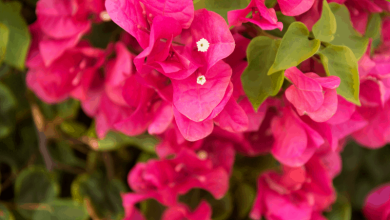Aglaonemas: [Cultivation, Irrigation, Care, Pests and Diseases]
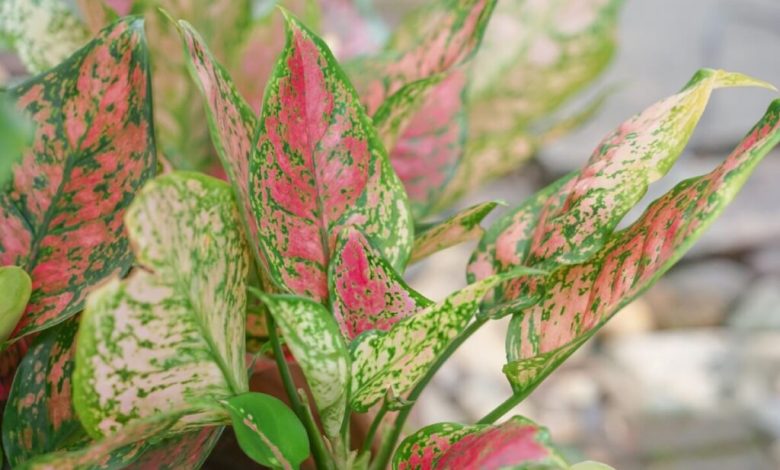
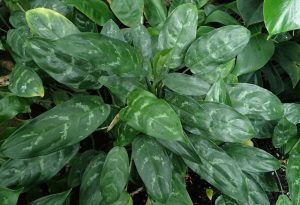 First of all, Aglaonema is a genus made up of 21 plant species of the Araceae family.
First of all, Aglaonema is a genus made up of 21 plant species of the Araceae family.
Some of the most cultivated species are A. commutatum Schott, A. crispum Nicolson and A. nitidum Kunth.
These plants come from southeastern China and northwestern India all the way to New Guinea. They were introduced to the West in the late 19th century, and numerous hybrid species have been cultivated since then.
Aglaonemas have gained popularity due to their ability to purify indoor air and survive in low light. In some regions it is even believed that they are plants that attract good luck.
Important points when sowing an aglaonema:
- Scientific name: Aglaonema commutatum.
- Common name: Aglaonema, dollar, silver spear.
- Height: 25 centimeters.
- Light requirement: Half shade.
- Temperature: Hot and temperate climates.
- Irrigation: Moderate.
- Fertilizer: Organic fertilizer.
What characteristics does aglaonema have?
Better known as the dollar, the aglaonema commutatum is a herbaceous, perennial, slow-growing plant, which produces 5 or 6 new leaves a year. In small plants the stems are erect. In larger specimens, they become decumbent.
They reach between 20 and 100 centimeters in height. The leaves of the aglaonema are narrow green sheets, with white or gray details, elliptical or lanceolate in shape. They normally measure between 13 and 30 centimeters long and 4 to 10 centimeters wide.

The aglaonema has axillary inflorescences, also called spadices, from which a cream-colored fleshy axis sprouts, which contains the male flowers at the top. In the remaining part are the female flowers which are surrounded by a large greenish leaf, called spathe.
It blooms during the months of June to September. This striking plant has small elliptical fruits that change from yellow to red as they reach maturity. Inside they contain only one seed.
When to sow aglaonema?
Aglaonema can be grown as a cutting during spring, when temperatures are around 21ºC. This time is also appropriate for transplanting the largest specimens to suitable pots, depending on their size and growth.
Where to plant aglaonema?
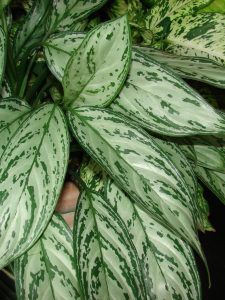 The optimal temperature for growing aglaonema is around 18ºC to 25ºC. It is also important to ensure that the relative humidity is at 75 or 80% to prevent some pests from spreading.
The optimal temperature for growing aglaonema is around 18ºC to 25ºC. It is also important to ensure that the relative humidity is at 75 or 80% to prevent some pests from spreading.
Aglaonema is known to have low tolerance to cold and wind chill. In fact, the growth of the plant stops when the temperature is below 15ºC and begins to be affected below 10ºC.
Aglaonema easily adapts to light conditions. It can develop in bright spaces, without direct sunlight and even in places with little lighting. It is advisable to grow it outdoors in warm places and indoors in places with a cold or temperate climate.
How to prepare the land?
Aglaonema can be grown in almost any type of soil with good drainage. However, it grows best in moist, well-aerated, slightly acidic, porous soils with a pH of 6 to 6.5.
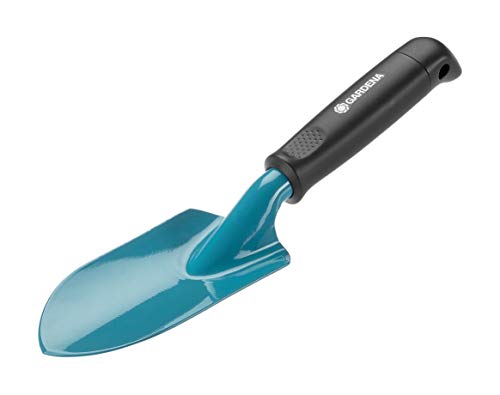
Likewise, the soil can be improved in spring and summer with humus or any organic fertilizer or commercial fertilizers, according to the manufacturer’s recommendations. Fertilization should be done every 15 days, especially during the growing months.

How do we water aglaonema?
As the aglaonema is native to humid climates, it is necessary to maintain moderate watering. It can increase a little during the growing season, in spring and summer, and increase during the dry season.

It is important to avoid saturation and waterlogging of the substrate. It is preferable to wait for the soil to dry out a bit before doing the next watering.
How often do we water the aglaonema?
The frequency of irrigation will depend on the time of year. During the summer it should be watered twice a week. However, watering should be reduced during the winter, moistening the substrate only once a week.
How to sow an aglaonema step by step?
The multiplication of aglaonema occurs mainly through terminal cuttings, although «in vitro» cultures are also carried out to obtain better quality plants. Seed cultivation is possible only when it comes to new hybridizations.
by cutting
This procedure should be done every 2 or 3 years, when the plant has dense foliage and cannot spread in the pot. It is important to wear gloves to avoid direct contact due to plant toxicity.
- Cut a stem that sprouts from the main trunk and has at least 3 leaves between 10 and 15 centimeters in length.
- Place the cutting in a container with water and wait a few weeks, until the root has reached 3 centimeters in length.
- In a pot place clay or gravel at the bottom. Add universal substrate until reaching ¾ of the remaining height of the pot.
- Carefully place the cutting and fix it to the center of the area.
- Cover with a light layer of substrate, gently settle it with your fingers and water until the water comes out of the holes in the pot.
- Locate the pot out of direct sunlight and keep the soil slightly moist until new leaves begin to sprout.
What care does aglaonema need?
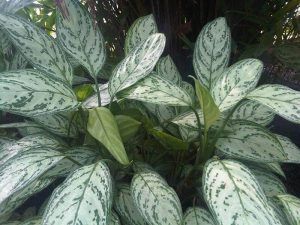 Aglaonema contains calcium oxalate crystals, which can cause skin irritation and rashes. It is not recommended to grow it in homes with children or pets.
Aglaonema contains calcium oxalate crystals, which can cause skin irritation and rashes. It is not recommended to grow it in homes with children or pets.
It is important to avoid excessive watering in the plant, since the stagnation of water can give way to root rot or cause diseases in the leaves.
Keep aglaonema away from hot and cold breezes or drafts, whether coming from windows, heaters, or air conditioners.
What pests and diseases affect aglaonema?
Aglaonemas are affected by anthracnose, and by the fungi Myrothecium and Colletotrichium. It can also be seriously affected by Erwinia bacteria (Erwinia carotovora and Erwinia chrysanthemi) and Pythium.
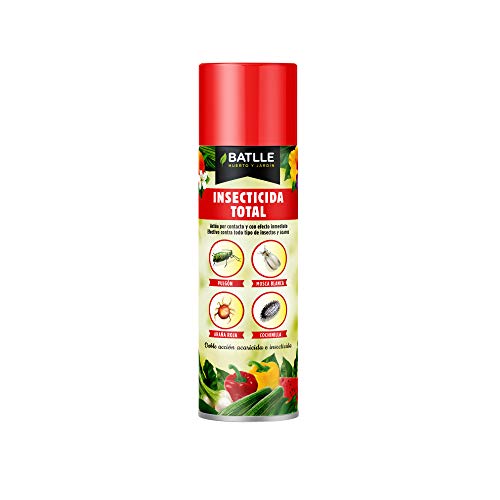
Among the pests that harm the plant are aphids, red spiders (Tetranychidae), cocoids, white mealybugs (Pseudococcidae), among others.
References
- https://sembramos.com.co/wp-content/uploads/2018/07/guia-de- care-aglaonema-dolar.pdf
- https://repository.si.edu/bitstream/handle/10088/13787/scb-0001.pdf?sequence=3&isAllowed=y
- https://www.jardineriayplantas.com/aglaonema-commutatum/
- https://www.arbolesornamentales.es/cultivo%20de%20Aglaonema.pdf
- https://www.flores.ninja/aglaonema/
- http://www.aroid.org/genera/aglaonema/aglaonema_success/aglaonema_success.pdf
- http://laventanadejaviruli.blogspot.com/2017/06/plantas-de-interior-60-multiplicacion.html
- https://www.thespruce.com/grow-aglaonema-houseplants-1902734#propagating-chinese-evergreen


![Photo of Deciduous Forest: [Concept, Characteristics, Fauna and Flora]](https://www.complete-gardening.com/wp-content/uploads/2022/08/deciduous-forest-concept-characteristics-fauna-and-flora-390x220.jpg)
![Photo of Indoor Plants [32 Examples, Types and Names]](https://www.complete-gardening.com/wp-content/uploads/2022/08/indoor-plants-32-examples-types-and-names-390x220.jpg)
